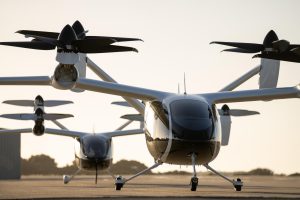
Jaafar-El-Awady is a professor of mechanical engineering at the Whiting School of Engineering and director of its Engineering for Professionals program in mechanical engineering. An aerospace engineer by training, El-Awady’s research focuses on the creation of multi-scale computational methods and experimental techniques aimed at developing next-generation materials for aerospace, naval, automotive, and energy applications.
What is innovative about these electric air taxis compared to existing aircraft and helicopter services?
Put bluntly: I am not ready yet to be amazed [by these electric air taxis]. The concept of this type of craft is not new. Aircraft that take off vertically and then fly like fixed-wing aircraft have been around for a few decades. The concept of multiple-rotor aircraft also has existed since the 1920s but has been made popular over the last decade in electric drones. What is new here is the reliance on electric propulsion for manned aircraft, as well as the ultra-light yet strong materials used for making the different parts of the aircraft. These vehicles are also quieter than traditional helicopters in hover mode due to their design and the way they fly.
But—and again, being blunt—its speed and range are a joke: a good start but nowhere near practical for mass transit. We should consider these as “luxury rides” rather than real, everyday taxis. By the way, air taxis have been around in the form of private helicopter rides or fixed-wing rides between neighboring cities for quite some time. But these are expensive, and they are mostly designed for the rich. I am skeptical that they are something that most of us will have access to and use anytime soon.

Jaafar El-Awady
How practical are these vehicles for intracity travel?
Currently, their range is, at best, 150 miles with top speeds of 150 to 200 mph. Plus, they need a landing pad, so take-off and landing must happen in specific locations.
In my view, we are better off if we invest in high-speed trains (with speeds up to 300 mph) for intracity transportation, like in Japan and China and some parts of Europe. To date, these are more energy-efficient than aviation in terms of passengers per mile, making them a more environmentally friendly option. I should note, though, that the environmental impact of electric aircraft is still being studied, and they could potentially have a niche role in sustainable short-range urban transport depending on how they are powered and integrated into transportation systems.
Why is the FAA creating rules for air taxis and recognizing them as a category of aircraft if the technology isn’t ready?
It’s not that the technology “isn’t ready” in the sense of safety or functionality; it’s just that widespread practical use—in my opinion—is still a few years away. While such electrically powered aircraft are still in development, they are advancing rapidly, and, as such, regulatory frameworks must be proactive to ensure smooth certification and integration when such aircraft become commercially viable.